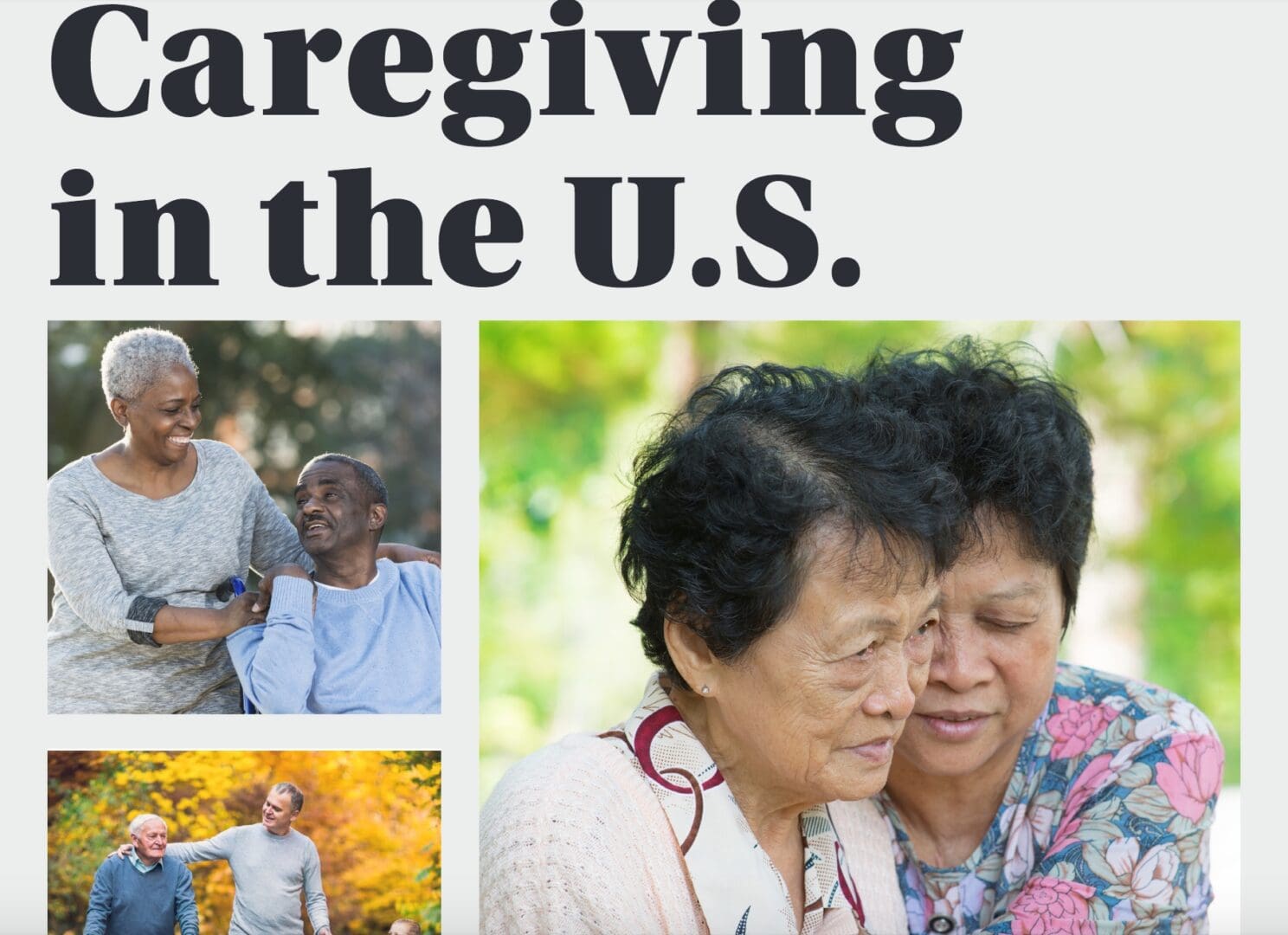Search Posts
Recent Posts
- RI Veterans: Did you know? 25.04.24 (100th for Louis Dolce, events, resources) – John A. Cianci April 25, 2024
- Business Beat: Bad Mouth Bikes takes home 3 national awards April 25, 2024
- Rhode Island Weather for April 25, 2024 – John Donnelly April 25, 2024
- We Cook! Mill’s Tavern’s Cajun North Atlantic Swordfish, Mango Salsa, Cilantro Citrus Aioli April 25, 2024
- The Light Foundation & RI DEM’s 4th Annual Mentored Youth Turkey Hunt a success April 25, 2024
Categories
Subscribe!
Thanks for subscribing! Please check your email for further instructions.

One in five Americans are unpaid family caregivers
by Herb Weiss, contributing writer on aging
As the nation sees a growing number of aging baby boomers, workforce shortages in health care and long-term care settings, increased state funding for community-based services, and a growing number of seniors requiring assistance in their daily activities, caregivers are needed more than ever. According to a recently released report from National Alliance for Caregiving (NAC) and AARP, an increasing number of unpaid family caregivers are stepping up to the plate to care for their older family members or friends. The caregiver report’s findings indicate that the number of family caregivers in the United States increased by 9.5 million from 2015 (43.5 million) to 2020 (53 million) and now encompasses more than one in five Americans (19 percent).
First conducted in 1997, with follow up surveys in 2004, 2009 and 2015, the Caregiving in the U.S. studies are one of the most comprehensive resources describing the American caregiver. Caregiving in the U.S. 2020 was conducted by Greenwald &a Associates using a nationally representative, probability-based online panel. More than 1,700 caregivers who were age 18 or older participated in the survey in 2019.
Demand for Caregiving Rising as Nation’s Population Gets Older
The 107-page Caregiving in the U.S. 2020 report also reveals that family caregivers are in worse health compared to five years ago. As the demand for caregiving rises with the graying of the nation’s population, the report calls for more be done to support this vital work.
“As we face a global pandemic, we’re relying on friends and family to care for the older adults and people living with disabilities in our lives,” notes C. Grace Whiting, JD, President and CEO of NAC, in a May 14 statement announcing the release of this report. “Caregivers are essential to the nation’s public health, and the magnitude of millions of Americans providing unpaid care means that supporting caregivers can no longer be ignored, she says, noting that report’s findings reveals that growing need.
According to Whiting, family caregivers care for more people than five years ago and they take on more care responsibilities as roughly one in four care for two or more people. “Many individuals are caring for a longer time, with nearly a third (29 percent) of caregivers nationwide reporting they have been caregiving for five years or more—up from 24 percent in the last study,” states Whiting.
Who are today’s caregivers?
This new caregiver study shows that 39 percent are men and 61 percent are women. The average age is 49.4 years. The profile of the family caregiver is also changing, too. While caregiving spans across all generations, Caregiving in the U.S. 2020 found more young people providing care, including 6 percent who are Gen Z and 23 percent who are Millennials. Nearly half (45 percent) are caring for someone with two or more conditions—a significant jump from 37 percent in 2015.
As to ethnicity, the caregiver report notes that six in 10 are non-Hispanic White (61 percent), 17 percent are Hispanic, and 14 percent are African American.
The report’s findings indicate that one in 10 of the caregiver survey respondents are enrolled in college or taking classes (11 percent), 9 percent have served in the military and 8 percent self-identify as lesbian, gay, bisexual, and/or transgender.
Caregivers in Poorer Health, Feeling Financial Strain
Caregiving in the U.S. 2020 also found that caregivers face health challenges of their own with nearly a quarter (23 percent of caregivers find it hard to take care of their own health and 23 percent say caregiving has made their health worse. The report also notes that personal finances are a concern for family caregivers: 28 percent have stopped saving money, 23 percent have taken on more debt and 22 percent have used up personal short-term savings.
Sixty one percent of the caregiver respondents work and have difficulty in coordinating care.
The May 2020 caregiver report states on average, caregivers spend 23.7 hours a week providing care, with one in three (32 percent) providing care for 21 hours or more, and one in five (21 percent) providing care for 41+ hours—the equivalent of a full-time unpaid job.
“The coronavirus pandemic is exacerbating the challenges family caregivers were already facing from a personal health, financial and emotional standpoint,” said Susan Reinhard, RN, PhD, Senior Vice President at AARP. “Family caregivers provide vital help and care for their loved ones, yet this survey shows that they keep getting stretched thinner and thinner. We must identify and implement more solutions to support family caregivers—both in the short term as we grapple with coronavirus and in the long term as our population ages and the number of family caregivers declines.”
: “Without greater explicit support for family caregivers in coordination among the public and private sectors and across multiple disciplines overall care responsibilities will likely intensify and place greater pressure on individuals within families, especially as baby boomers move into old age,” warns the report’s authors, calling on Congress and state lawmakers to develop policies that ensure that caregivers do not suffer deteriorating health effects and financial insecurity.
Thoughts from AARP Rhode Island…
“The wealth of information in this report is an essential guide to policymakers,” said AARP Rhode Island State Director Kathleen Connell. “It reveals important trends and underlines future needs. For AARP, it provides information on how, as an organization, we can best serve Rhode Island’s 136,000 family caregivers. The challenges they face vary, making it very important that we can provide focused resources that meet anyone caregiver’s needs. The report’s overall takeaway – that the number of caregivers is rising dramatically – is a call for increased awareness and support. This responsibility starts at the very top of federal, state and municipal government and flows all the way down to family members who can better share caregiving responsibilities. Many will be asked to step outside their comfort zone, so we all will have to work together,” adds Connell.
Connell noted that the report points out the shift from traditional residential health care settings to community-based settings. “The research reaches a clear conclusion,” Connell observed. “Families will have to fill new roles, learn new skills and absorb more out of pocket caregiving expenses. This will create additional the stress for many family caregivers. That’s why it is so important that we develop the training, tools and other resources caregivers require.”
A 2019 AARP report, Valuing the Invaluable, calculated that Rhode Island family caregivers provide 114 million unpaid hours of care annually. Based on the average $15.76 per hour wages of paid caregivers, family caregivers represent an economic value of an estimated $1.8 billion.
The 2020 study was funded by AARP, Best Buy Health Inc. d/b/a Great Call, EMD Serono Inc., Home Instead Senior Care®, The Gordon and Betty Moore Foundation, The John A. Hartford Foundation, TechWerks, Transamerica Institute, and UnitedHealthcare.
For a copy of Caregiving in the U.S. 2020, go to:

Herb Weiss has enjoyed a distinguished 36 year career in journalism, earning a national reputation as an expert on aging, health care and medical issues. Over 630 articles that he has authored or coauthored have appeared in national, state and local publications. Governor Gina Raimondo appointed Him to the Rhode Island Advisory Commission on aging. Today, Herb’s weekly newspaper column appears in the Pawtucket Times and Woonsocket call, two North Rhode Island daily newspapers, and will now run on occasion in RINewsToday.com. Herb and his wife, Patty Zacks, reside in Pawtucket, Rhode Island.
